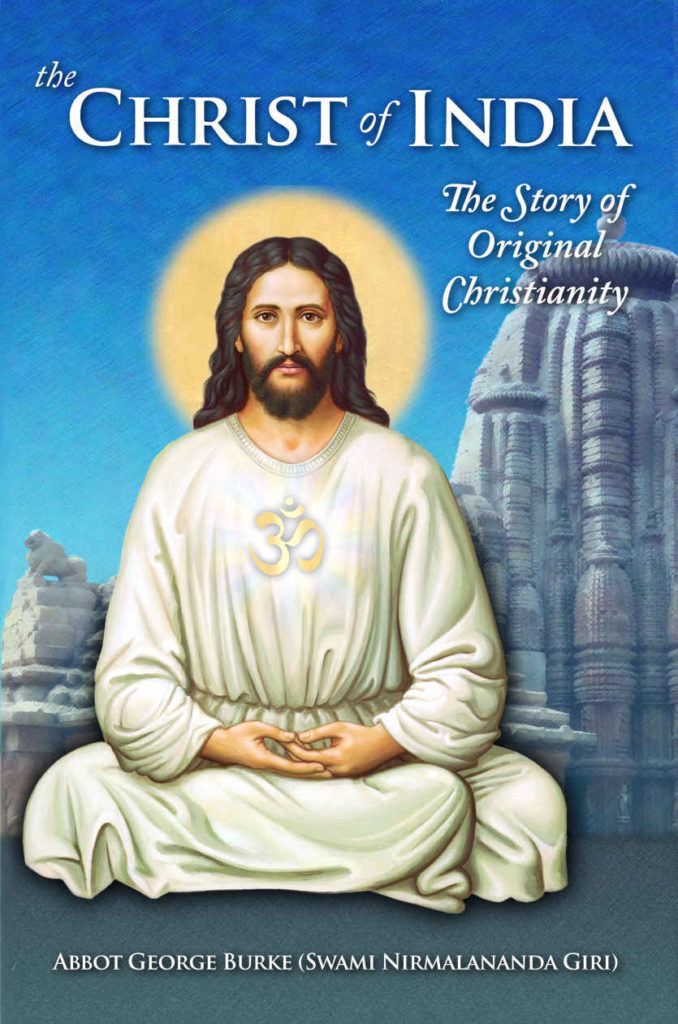For Hindus, Christmas begins with Divali – the annual Festival of Lights – which usually falls in November. As followers of an eclectic faith, Hindus celebrate Divali as well as Christmas. For them, Jesus Christ is just one of the avatars [divine incarnations], and the son of the Supreme Being [Brahman], whose birth on Christmas day must be rejoiced.

Hindus love and revere Jesus. After all, his missing years between his childhood and the beginning of his ministry were spent in India, a period not described in the New Testament. At the age of 12, Jesus followed the ancient Silk Road to India where he spent six years in Puri and Rajgirh, near Nalanda, the ancient seat of Hindu learning. Then he went to the Himalayas and spent time in Tibetan monasteries (studying Buddhism) and after to Persia. He returned to Jerusalem at the age of 29.
This information is contained in the book entitled The Unknown Life of Jesus Christ (1890) by Nicolas Notovitch, a Russian war correspondent. There is also the book Jesus Lived in India: His Unknown Life Before and After the Crucifixion (2001) by Holger Kersten, a German theologian. There is also the documentary Jesus in India (2008) by Paul Davids, an
American filmmaker.
Jesus of Nazareth belonged to a sect called the Essenes which was not really a part of Judaism and the Hebrew community. In an article entitled “The Christ of India”, Abbot George Burke (Swami Nirmalananda Giri) states that the Essenes had always maintained some form of contact and exchange with India – “a fact that galled their fellow Israelites.”
The symbol of Light
As a young yogi growing up in India, the Essene Jesus found much in common with Buddhist and Brahmanical Hindu beliefs and practices. Some of these were adherence to non-violence, celibacy and the wearing of only white clothes as a sign that worship to God who is Light must be clothed by Him in Light. There was also reverence to the sun, not as a god but as a symbol of the One God of Light and Life.
The universal mantra for Divali resonates in the earnest prayer of Christians, declaring that Christ is the Light that has risen. The eternal message is derived from the ancient Hindu Bṛhadāraṇyaka Upaniṣad (700 BCE): “asato mā sadgamaya, /tamaso mā jyotirgamaya, /mṛtyor mā’mṛtaṃ gamaya.” This rendering translates to: “From falsehood, lead me to truth; /From darkness, lead me to the light; /From death, lead me to immortality.”
The motif of light is common to Hindus during Divali and Christians during Christmas: “For you were once darkness, but now you are light in the Lord. Live as children of light (for the fruit of the light consists in all goodness, righteousness and truth) …)” Ephesians 5:8-14. The presiding goddess for Divali is Mother Lakshmi, the Goddess of Light.
In addition to lighting countless deeyas [tiny clay lamps] at homes, in the streets, parks and offices, Hindus in the tropics also string twinkling clear bulbs over “Christmas trees” to mimic icicles dangling on a snowy night. Entire villages, such as Felicity in Trinidad and Tobago (T&T], are lit up in celebration of Divali, which heralds the Christmas season. Christmas store bargains soon replace Divali sales.
Miraculous birth of Krishna and Christ
For Hindus, Christmas is a continuation and another form of Lord Krishna’s birthday (Janmashtimi) which takes place annually between August and October. Like Jesus, Krishna had a miraculous birth on July 18, 3228 BCE.
Lord Krishna was not born from a sexual union, but rather through “mental transmission” from the mind of Vasudeva into the womb of Devaki. He was born in a prison cell when his mother was captured by King Kanse. During Janmashtimi, an image or symbol of baby Krishna is ritually rocked in a little cradle or hammock amidst the singing of bhajans [hymns]. In keeping with Christian Nativity tradition, a doll of Jesus is rocked in a cradle in a manager with the singing of lullabies.
Before COVID-19, children of all ethnicities in T&T in the Caribbean would roam the streets and fill the neighbourhoods with wild laughter as bamboo canons burst like thunder after lightning. They would scream in excitement as they use Christmas candles to light deeyas, sparklers (“star-lights”), firecrackers and fireworks.
Hindus carry over the joyous spirit of Divali to Christmas without compromising their own religious beliefs. They continue to clean, paint and decorate their homes and entertain guests with curried, vegetarian food, roti and sweetmeats, and offer them wrapped gifts and greeting cards.
While Christmas is a Christian festival, Hindus are very much a part of it, just as much as non-Hindus actively participate in Divali. It is this fluidity, mixing, comradery and cultural exchange that make the multi-ethnic country of T&T so unique and attractive.

is a full-time anthropologist at the University of Guyana (UG) and Fellow of The Eccles Centre for American Studies, British Library (2022-23). He is a former Assistant Professor at the University of Trinidad and Tobago (UTT). He obtained his Ph.D. in Anthropology from the University of Florida (UF). As a doctoral student, he won a Florida Caribbean Institute Award, an A. Curtis Wilgus Grant, and an Organization of American States (OAS) Fellowship.
Mahabir received a National Award (Hummingbird Silver Medal) for his contribution to education in his country in 2011. He was among 50 recipients who received a Distinguished Alumni Award from the UWI Alumni Association.
Mahabir is the author of 12 books to date.
